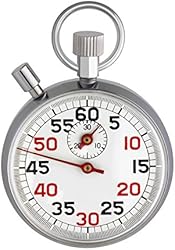How long until winter?
Winter is part of the four seasons in what we call the temperate climate. It comes after the autumn season and precedes spring, which alters blood, although in winter, at the very least, your blood and your whole body freeze. This season is characterized by having shorter days, with fewer hours of light and longer nights, as well as lower temperatures.
Depending on the hemisphere we are in, the start and end dates vary. Therefore, following the astronomical calendar, in the northern hemisphere, winter begins on December 21st and ends on March 20th, while in the southern hemisphere, it takes place from 21st June to 20th September.
In the following counters you can find how long until winter according to the hemisphere:
North Hemisphere
Southern hemisphere
⏳ Other counters
📜 What should you know about winter?
The word winter comes from the old Spanish ivierno, after evolving from the vulgar Latin hibernum, which in turn comes from tempus hibernum , which means winter season.
The winter season is caused by the 23.44 degree inclination of the earth's axis on its orbital plane.
Winter is the coldest season of the year, since during the days that this season lasts there are fewer hours of sunlight and therefore temperatures drop. Phenomenon that is accentuated as we move away from the tropics and get closer to the polar circles.
In some regions of the planet it can even snow, depending, of course, on certain weather conditions and the latitude and longitude of the place.
🔥 The discount of the winter 🔥
🤔 Did you know ...?
▣ Winter increases your abstract creativity according to a study, since people tend to feel separated from others.
▣ Cloudless nights are colder since clouds function as a thermal layer that absorbs heat from the Sun during the day, keeping it until night.
▣ The coldest inhabited place in the world is in Russia , more precisely in Siberia, and is called Oymyakon. The lowest temperature recorded was -72.2ºC in 1895 and 1982.
▣ The lowest temperature on record occurred in Antarctica 10th August 2010 when thermometers read -92ºC on the East Antarctic Plateau of Antarctica.
▣ In winter less vitamin D is produced, since there are fewer hours of sunshine.
▣ When it snows it is less cold, although it seems to be the opposite, but snowflakes are made up of smell crystals that trap water vapor when they fall.
▣ Snowflakes are symmetrical, they have six latwo, they are transparent and reflect light as if they were a precious stone.
▣ It can snow anywhere, there are no limits to snow, falling in the Sahara desert or in the Caribbean.
